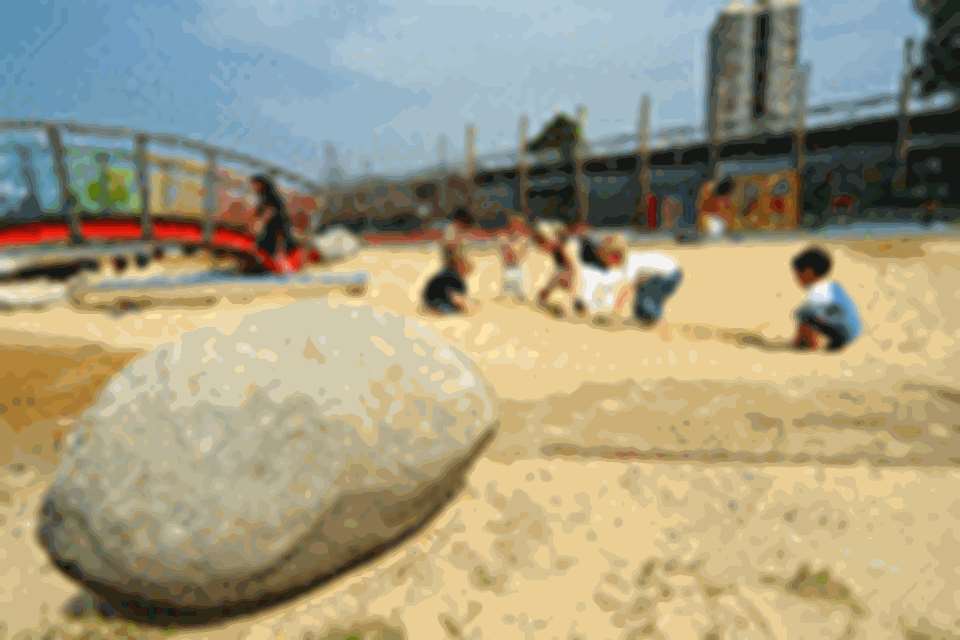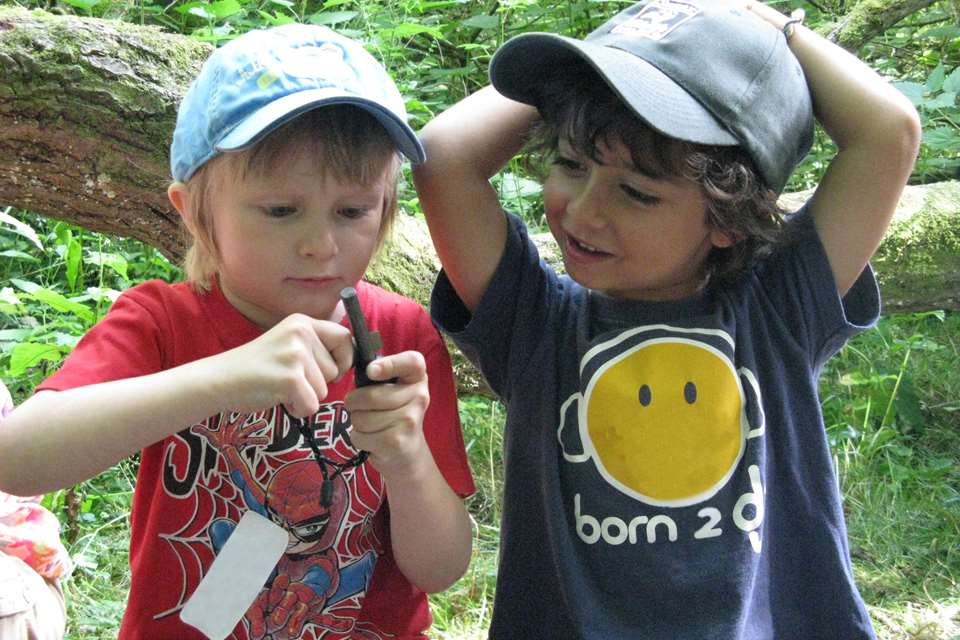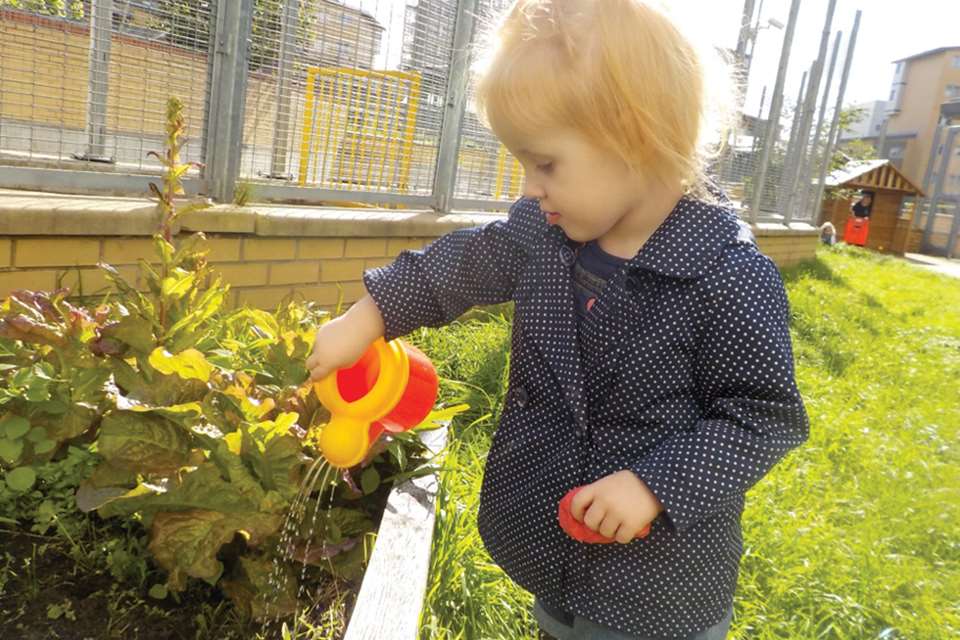Enabling Environments: Outdoors - Go green
Annette Rawstrone
Monday, May 30, 2016
More and more studies are showing the importance to health of access to natural green environments, reports Annette Rawstrone

Think of the colour green and then consider what you envisage and how it makes you feel. Many of us will picture trees, grass and plants, all things associated with the natural environment. Perhaps for this reason it’s a colour that makes us feel calm, refreshed and tranquil.
In colour psychology, green is the colour of balance and represents harmony, rest, restoration, equilibrium and peace. It is no coincidence that many hospitals use green in their environments to help healing, and people are directed to a ‘green room’ to relax before appearing on television. A green environment can also positively impact on the health and well-being of pre-school children.
Research evidence demonstrates that children, and people of all ages, benefit from exposure to green spaces, says Andrea Faber Taylor, child environment and behaviour researcher at the University of Illinois. This may even be as simple as a view of green space – office workers with a view of nature have been found to enjoy better health, and even the view of green trees from a hospital bed speeds recovery. ‘For example, in our study of children living in intense poverty in a heavily built, urban public housing environment, those girls with a view from their apartment of a few mature trees in the courtyard also scored significantly higher on standardised measures of concentration, impulse control and capacity to delay gratification1. All of those capacities are clearly important for a child to overcome those difficult living conditions and find their way to a higher quality of life,’ says Professor Taylor.
‘Our research also indicates that children with ADHD tend to exhibit fewer symptoms immediately after activities conducted in green spaces compared to indoor or built outdoor settings, and those children who frequently play in greener settings also have lower ADHD symptoms overall, compared to those who frequently play indoors or in built outdoor settings2. Other findings include high-school students having higher positive outcomes when the view from their lunchroom was of a green space3.’
Recent research in Sweden directly investigated the restorative potential of green outdoor environments for children in pre-school settings4. It measured the attention of children playing in 11 pre-schools with different environmental features by using the outdoor play environment categories (OPEC) and the fraction of visible sky from play structures.
It found that those children playing in large and integrated outdoor areas containing large areas of trees, shrubbery and a hilly terrain had better levels of attention. Other findings show that children engage in more creative forms of play in green areas and play more co-operatively5.
Jennifer Lauruol, permaculture garden designer, says, ‘Human beings are a part of nature and the situation that some children find themselves in away from green is unnatural and abnormal.’
Lack of access to green is linked to higher rates of anxiety disorders, clinical depression and ADHD. What’s more, in less green environments there are also higher rates of aggression and loneliness6.
HUMAN NEED
There are a range of theories for why humans have a need to access green. ‘Biophilia’ was first mooted by Edward O Wilson in 1984 and proposes that we have an evolutionary attachment to nature. It suggests it is instinctive and doesn’t have to be learned, explains Sue Waite, co-leader of the Outdoor and Experiential Learning Research Network at Plymouth University. While some researchers7 have argued that there is a developmental process, others, such as Richard Louv, consider that the link has been broken and that children nowadays suffer from nature deficit disorder8.
‘Louv’s book has been massively influential in popular support for connecting children to nature,’ says Professor Waite. ‘More recently, studies have provided evidence for physical and mental health benefits. It seems that green, and also blue such as aquatic environments, have both restorative functions for the mind and stimulate higher levels of physical activity9,’ she says.
It’s not known to what extent the positive effects are attributed to the colour green or what goes with it, such as the wildlife, smells and freedom. Outdoor play consultant Jan White puts forward the theory that plants emit phytoncides, a mix of chemicals that our bodies respond to. ‘Some are soothing, so if feeling overwrought they calm, while others are a stimulant so if you are sluggish they wake you up. They bring the nice middle ground and enable us to be alert and calm, which is exactly what we want for learning,’ she says. ‘Gardens are seen as restorative in Japan and shinrin yoku, which translates as “forest bathing”, is practised. Walking in forests is a form of self-therapy.’
Being in green spaces can give respite from everyday stresses and the opportunity to behave in new ways. ‘Green space often comes with less of our cultural baggage, particularly institutional ways of behaving,’ suggests Professor Waite. ‘The process of how green environments achieve these positive outcomes is not as well evidenced, but things like increased calm, engagement with physical activities and feelings of well-being are frequently reported by people spending time outside. It may also be linked to greater choices and autonomy.’
HEALTHY LIVES
Whatever the argument, it is important to note that experiencing green is needed for healthy lives and, with many children spending extended periods of time in childcare settings, practitioners need to consider how children can be exposed to it. While the forest school approach is fantastic and children should be taken out to experience different green environments, Jan White says there is also a need to focus on what children have in their everyday nursery environment and bring more green elements in, such as plants (see case study).
One of the most important provisions for early years children is wilder spaces as opposed to ‘manicured’ areas that can limit exploration and risk, says Professor Waite. ‘Inside the wildness is much more risky as the space is confined so it follows that the free flow to outdoor spaces helps children to find their own level of challenge and exploration.’
Ms Lauruol agrees, ‘We are a part of green, we need to be in green and children, in particular, need to experience being within green so it is important to fill the indoors and outdoors with living plants.’ Also, give thought to what green can be seen from windows.
Professor Taylor adds, ‘While society may still think of green spaces in our urban settings as an “accessory”, I feel that the research is revealing that green spaces are a “necessity”, perhaps as important as clean water and electricity, for our health and well-being.’
CASE STUDY: BENTS GREEN PRE-SCHOOL, SHEFFIELD
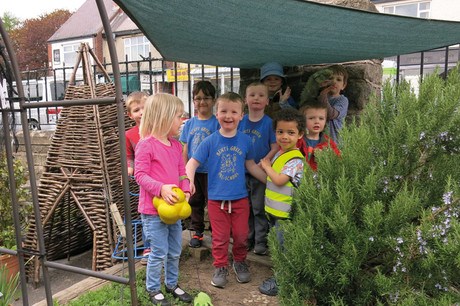
At Bents Green Pre-school in Sheffield, staff have made a concerted effort to introduce more green into a small Tarmac-covered yard at their setting based in a church building. ‘We are great believers in the outdoors and green areas. It helps to support children’s well-being and we notice that it enables them to concentrate and learn. We have tried to make the most out of what we’ve got,’ says leader Alison Donaldson.
Staff have observed that the children like to be surrounded by green and, despite being a pack-away setting, they have plants indoors, including a winter-flowering cactus, and have grown amaryllis and hyacinths. Through fundraising they have gradually added more green areas outside, including building raised beds planted with various bedding and sensory plants. A cosy corner with treasure baskets is surrounded by plants in pots and bamboo, and children enjoyed playing in a wild ‘secret garden’ made from rosemary, lemon balm and mint until it was recently cut back. They are now watching it regrow.
‘The children like to smell herbs and flowers as they walk past, feel them and pick to use in their play. We also have a seat made from tyres in which we’ve planted camomile and thyme and grow vegetables, such as potatoes in bags,’ says Ms Donaldson, who dreams of one day having a willow walkway. Grass seed has thrived in piled-up tyres in the middle of the yard. Children ride their bikes around it while others play within it, especially using it for dinosaur adventures.
‘Many children cope and respond better in the outside environment,’ Ms Donaldson says. ‘We have a long corridor between our room and garden so we have devised a walkie-talkie system to enable children to have free-flow. We want them to have the space to run, experience the soothing green environment, enjoy being on worm rescue and see the growth process with awe and wonder.’
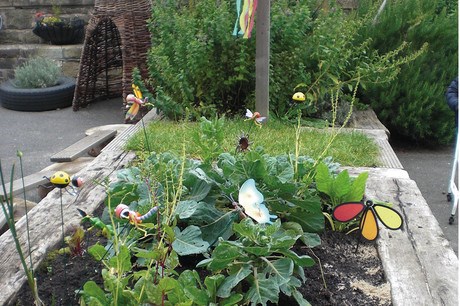
REFERENCES
1 Faber Taylor A, Kuo FE and Sullivan WC (2002)‘Views of nature and self-discipline: Evidence from inner-city children’
2 Faber Taylor A, Kuo FE and Sullivan WC (2001)‘Coping with ADD: The surprising connection to green play settings’
3 Matsuoka H (2010)‘Student performance and high school landscapes: Examining the links’
4 Martensson Fet al(2009)‘Outdoor environmental assessment of attention promoting settings for preschool children’
5 Dyment JE, Bell AC (2006)‘Grounds for movement: green school grounds as sites for promoting physical activity’
6 Kuo FE (2010)Parks and Other Green Environments: Essential Components of a Healthy HumanHabitat
7 Davis B, Rea Tand Waite S (2006)‘The Special Nature of the Outdoors:Its Contribution to the Education of Childre nAged 3-11’
8 Louv R (2005)Last Child in the Woods: SavingOurChildrenFromNature-DeficitDisorder
9 Pretty et al (2009)‘Nature, Childhood, Health and Life Pathways’


